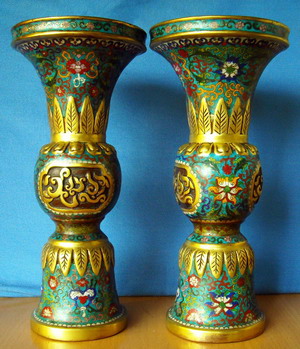Creating Beijing enamel art
 |
Cloisonné, or enamel art, is internationally considered a traditional Chinese art form, but according to Mao Jinfu, manager of the Beijing Enamel Factory, the materials were brought from Europe in the 1300s.
Cloisonné is French for "cell", and refers to the technique of applying thin wires to form raised barriers on different areas of enamel on top of the original metal form. An ancient metalworking technique, it is a multi-step process used to produce jewelry, vases, and other decorative items. Objects produced by this process are also called cloisonné.
Cloisonné first developed in the Near East. The technique reached China in the 13-14th centuries from Byzantium or the Islamic world. The first written reference is in a book of 1388, where it is called "Dashi ('Muslim') ware". No Chinese pieces clearly from the 14th century are known.
The earliest datable Chinese pieces are from the reign of the Xuande Emperor (1425-35), which however show a full use of Chinese styles suggesting considerable experience in the technique. It was initially regarded with suspicion by Chinese connoisseurs because it was foreign and appealed to feminine tastes.
















